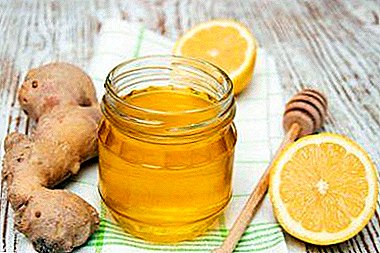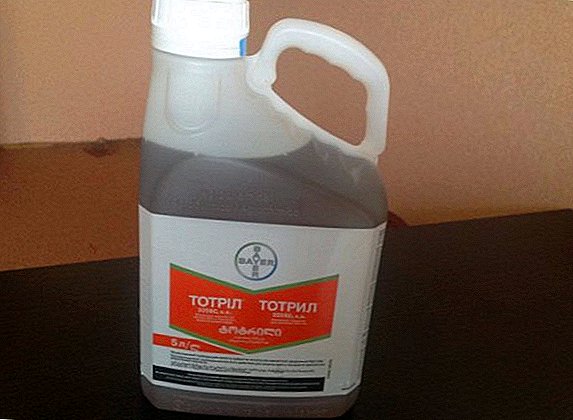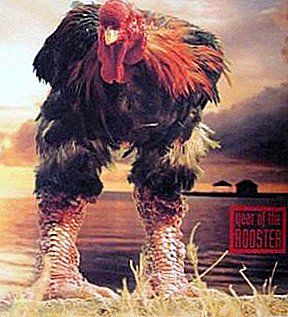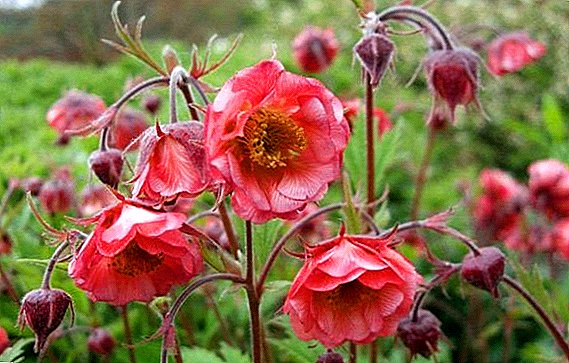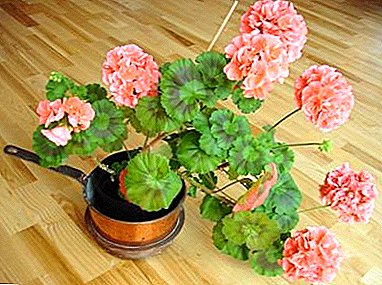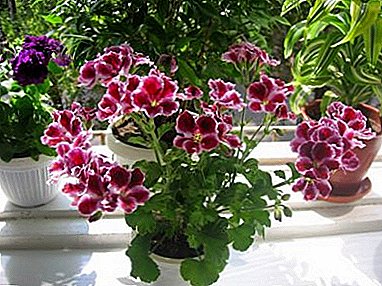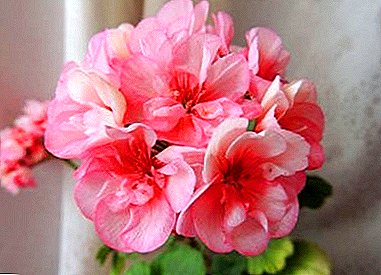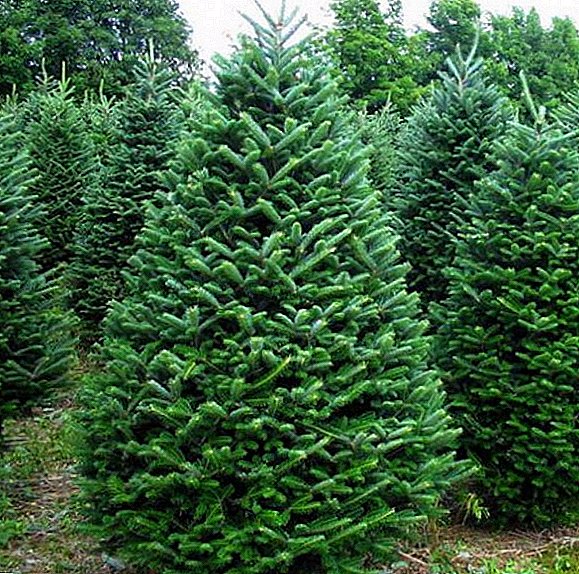
Nordman fir is an excellent ornamental plant with which you can decorate any personal plots. So that you can also decorate your plot with this beautiful tree, below we will tell you more about Nordman fir and about its planting and care.
Nordman fir: description
Fir Nordman, or Caucasian is a coniferous tree, which was first discovered by the botanist Alexander von Nordman, in whose honor and got its name. The plant belongs to the number of evergreen trees that can grow to 60, and sometimes up to 80 m in height (we are talking about the natural conditions of growth).
If you want to plant on your site Nordman fir, pay attention to her description:
- the crown of the tree is distinguished by a cone-shaped shape, which can reach 2-3 m in diameter;
- the trunk of a tree is thick; under natural growing conditions it can reach 2 m in diameter;
- the color and structure of the bark changes depending on the age of the tree - at a young age it is smooth gray-brown, begins to crack in a more mature one and becomes darker dull;
- branches on the trunk are densely, each slightly raised up;
- young shoots have a light greenish color with light yellowness, decorated with short and fluffy needles;
- the main branches are covered with dark green needles, shiny above and dull below;
- the length of the needles can reach 4 cm; when rubbed, a very rich pine aroma is felt, which is caused by the presence of a large amount of oils in the needles;
- the adult tree blooms annually (April-early May), covered with both male and female flowers; male flowers are presented as spikelets with a reddish tinge, and female flowers are represented by greenish earrings, which are formed mainly in the apex of the crown;
- large fruits form up to 20 cm in length as fruits; they keep on branches vertically, have a short leg; immature cones have a green color, in the process of maturation, they become increasingly brown and coarse;
- the root system may differ depending on the characteristics of the soil: if the soil is soft, the root system goes deep into the root, if clay and rocky - spreads near the surface.
Did you know? Due to its attractiveness, Nordman fir is used in European countries as a New Year tree.

Under favorable growing conditions, Caucasian fir is able to live for about 700 years. It is noteworthy that the increase in the tree is observed regardless of age.
Popular types of evergreen fir are also balsamic and Korean. In addition to decorative, fir has also healing properties.
Main varieties
Tree has a number of varieties, among which you can choose the most attractive for you:
- 'Golden Spreader'. Dwarf fir, which has a rather slow growth. For 10 years of active growth, the tree is able to stretch no more than 1 meter. The same diameter reaches its crown. The needles of this variety is small - only 2 cm in length, has a golden-yellow color in the upper part and yellow-white in the lower one. The variety is more adapted for cultivation in the southern regions of Ukraine, most often used to create rock gardens.
- 'Jadwiga'. This variety is a hybrid, among the main advantages of which are rapid growth rates and a dense crown with dark green needles in white bottom. Thermophilous enough tree.
- 'Pendula'. Quite a large tree, however, has a slow growth rate. Forms a narrow crown, consisting of thick branches covered with lush green needles. This variety is rather demanding to the place of cultivation - it is recommended to plant out protected from drafts areas with high humidity. It looks best on small areas.
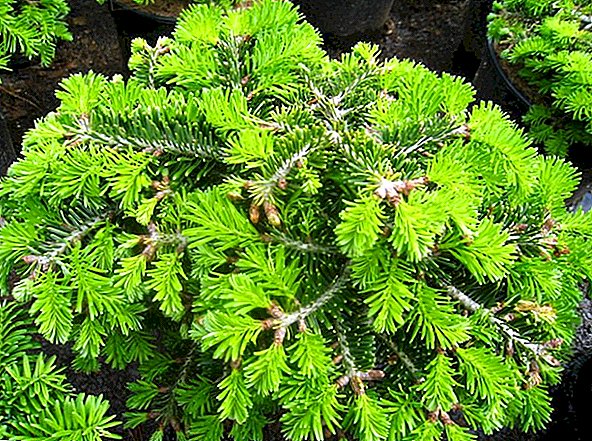

Did you know? The natural growing conditions of Nordman fir cover the entire Caucasus, Turkey and even the countries of the Middle East. This tree can form dense coniferous forests, adjacent only to beech.
What you need to know about planting plants
The dream of Caucasian fir at a dacha is feasible regardless of the characteristics of your summer cottage, as in growing this tree is unpretentious. In any case, you can also independently improve growing conditions for your favorite plant.
Choosing a landing site
Caucasian fir is a tree that actively develops plots at an altitude of about 1200 meters above sea level. Therefore, it shows low growth rates in low areas, which, however, is not important for ornamental cultivation. The main feature (with the exception of some varieties) is the ability to actively grow in shady and well-lit places. This tree is not afraid of even strong winds, but prefers areas with high humidity.
What kind of soil is needed for successful growth
Caucasian fir Nordman loves nutritious soils rich in mineral fertilizers. Loam is best suited for planting; however, good tree growth is also noted when planting in heavier acidic soils.
Important! Fir can be propagated only by ripened seeds, since vegetative methods show themselves from a very bad side. Cuttings may not settle down at all or take root with great difficulty. As for the seeds, their ripening occurs at the end of October - the beginning of November. Only seeds that themselves fly out of the opened cones are considered matured.

Landing rules
Since the Caucasian fir breeds only with seeds, they are stratified 1.5-2 months before planting. To do this, the seeds are placed in the soil previously filled into the container and left in the refrigerator or in the basement. After that, in spring the seeds are germinated in warmth, and the resulting seedlings are spiked into larger containers. Usually the plant is grown in pots for 5-7 years and only after that it is transplanted into open ground. This is due to the instability of young seedlings that can die under any adverse conditions.
Next to the fir, you can also plant: spruce, larch, mountain ash, Thunberg barberry, thuja, pine, juniper.
Considering the circumstances described above, it is recommended to plant fir on the site in the form of a seedling acquired in a nursery. For this, a pit is prepared with a depth of 80 cm and a width of 60 cm. It is recommended to add a layer of drainage to the indicated depth, the presence of which is mandatory when planting fir (crushed stone or gravel is used for this). For successful adaptation and growth of the tree, prepare soil mixture in the specified proportions:
- sand - 14.5%;
- humus - 14.5%;
- clay - 28%;
- peat - 42%.

Care features
Nordman fir is not very demanding to care, however, depending on the growing conditions, it still needs to be looked after.
Watering and feeding plants
Nordman fir in growing requires periodic watering and fertilizing, which is carried out only during the growing season of the tree. Watering is carried out only for young saplings, mature trees can not be watered at all, as their root system is fully capable of providing large trees with moisture. As for dressings, they begin to be carried out only from 5-6 years after planting. It is best to use liquid complex preparations for fertilizer conifers for fertilizer.
Important! Caucasian fir has a good resistance to low temperatures. The tree of middle age easily tolerates frosts down to -30 °C, and with age, this threshold only increases. But here young saplings are afraid of frost, therefore it is recommended to carefully cover them for the winter.

Soil care
Young saplings of fir are very sensitive to the neighborhood with weeds, therefore it is very important to keep the near-trunk tree of the trees in perfect cleanliness. In order to maintain it longer, it is recommended to regularly mulch the soil around the Caucasian fir, using rotten sawdust for this purpose.
Pruning
Nordman fir in general does not require pruning. However, if you want to make the tree more decorative, pruning is quite acceptable. The need for it arises in relation to old trees, on which a lot of withered branches appear. So that they do not spoil the appearance of the tree - the branches must be carefully removed with a saw, not forgetting the processing of the cut-off place. 
Plant Diseases and Pests
The Caucasian fir is quite resistant to various pests, but the succulence of its needles can still attract them. Under unsuitable growing conditions (the climate is not suitable, the soil or not enough fertilizers) some diseases can also affect this tree. We will get acquainted with the problems of Nordman fir in more detail.
- if the needles start to shrivel and honey drops appear on it - most likely the fir was struck by a false shield, which would help get rid of burlap traps soaked in glue from the tracks;
- cobwebs and yellow-brown spots on the needles - a sure sign of a spider mite, which is almost impossible to get rid of on an adult tree; dwarf fir is recommended to be sprayed with dandelion and garlic infusions;
- a white coating on the needles of fir usually leaves Hermes, which only insecticides effectively help to fight;
- the fir moth is also dangerous for the needles of the tree, so its butterflies need to be destroyed with biological preparations, and also every spring to dig the soil around the trunk of the fir to destroy the larvae.

Important! Nordman fir comes into fruition rather late. Usually this moment has to wait one or two decades. Faster, this process begins in the hybrid varieties of this tree.
Hopefully, you will no longer have a question about whether fir can be planted on the plot and how to take care of it. Consider only that with insufficient moisture, shoots and needles on the tree can dry out, so choose for planting on your site the variety of Caucasian fir that is more likely to take root on it.



